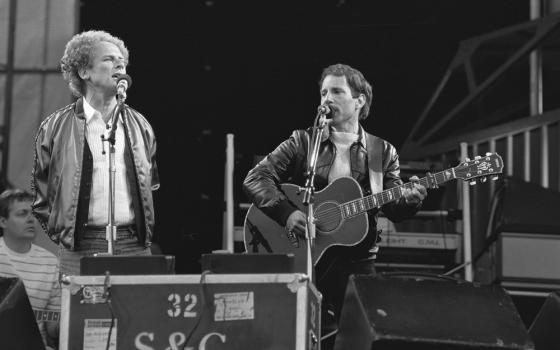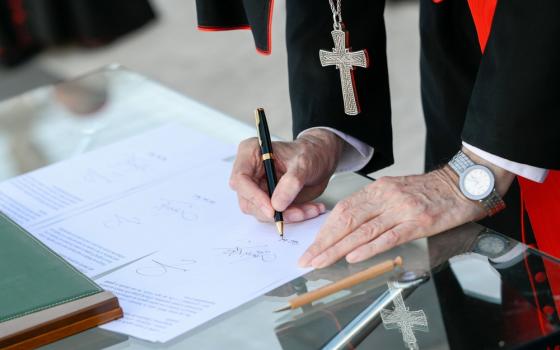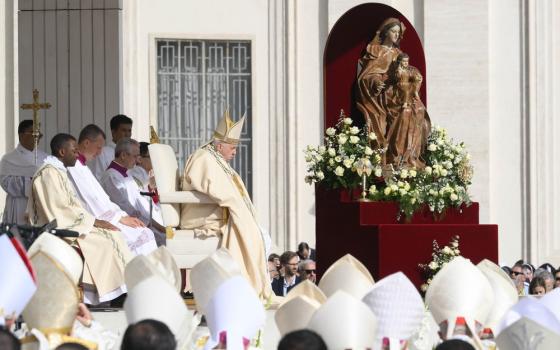
He was one of the most influential Catholics of the last century.
Thomas Merton was born in France during a snowstorm just a few months after the First World War had begun. He died in the late morning of Dec. 10, 1968, in Bangkok, victim of a freak accident with a faulty fan.
Educated at Cambridge in England and at Columbia in New York between the two World Wars, Merton experienced the disenchantment with the modern world that many of the intellectuals of his generation felt. His conversion to Roman Catholicism led him into an ancient system of values and doctrines that countered the nihilism and hedonism he disliked in modern society. In 1941, he would find both a home and a family in the monastic enclosure and the community life of a Trappist monastery in Kentucky.
Early in his career there, he wrote of the austere Trappist life: “The men who come here are the same, originally, as the men in the subway … but the difference is, here they have forgotten about being wise guys. A lot of my brothers are really saints.”
He desired to be in that number, for “the thing that makes the most sense is to be in the presence of God and live by His will as we live on air and bread.”
In 1948, his autobiography, The Seven Storey Mountain, became a bestseller. It has never been out of print and has been translated into 15 languages. He became the most famous monk in the world.
He observed, though, in a letter to a fellow monk: “Anyone who imitates me does so at his own risk. I can promise him some fine moments of naked despair.”
In 1965 he moved to a two-room cinder block building with wide front windows about a mile from the abbey and began living as a hermit. “I am living as a stylite on top of a hermit hat. I am utterly alone from human company … I make no more cookies in the cookie factory.” He shared a wooden outhouse near his hermitage with a large blacksnake.
Throughout the 1960s, he wrote about the hot issues: social justice, civil rights, nuclear arms, the war in Vietnam. “I am on the side of the people who are being burned, cut to pieces, tortured, held as hostages, gassed, ruined, destroyed. They are the victims of both sides. To take sides with massive power is to take sides against the innocent.”
In 1968, “that shooting gallery of a year,” on a car trip into Bardstown, Ky., he heard on the radio that Martin Luther King Jr. had been shot.
Later he wrote in his journal: “So the murder of Martin Luther King … lay on the top of the traveling car like an animal, a beast of the apocalypse. And it finally confirmed all the apprehensions … that things are finally, inexorably, spelling themselves out. Why? Are things happening because people in desperation want them to happen? Or do they have to happen? Is the human race self-destructive? Is the Christian message of love a pitiful delusion? Or must one just ‘love’ in an impossible situation?”
King had been planning to make a retreat later that year with Merton as his spiritual director.
During his last year, Merton took trips to Alaska, northern California and finally to the Far East.
In his journal from those trips, he jotted down the graffiti on toilet walls in Anchorage and noted his impatience at constant interruptions and demands for tedious small talk: “There’s always someone, somewhere who knows a Trappist.” He wrote a note to himself for future air travel: “Get the last window seat in the back, next to the kitchen. Get Bloody Mary when the girls start off with their wagon.”
Leaving at last on a plane from San Francisco bound for the East, he wrote: “We left the ground, I with Christian mantras and a great sense of destiny, of being at last on my true way after years of writing and wondering and fooling around. May I not come back without having settled the great affair. And finding also the great compassion, mahakaruna. … I am going home where I have never been in this body, in this washable suit.”
In Sri Lanka, at the Buddhist shrine at Polonnaruwa, an ancient abandoned city, he was able to wander among the ruins while his companion, another priest, shied away from the pagan art on display.
He looked upon a colossal statue of Buddha sleeping and observed: “The thing about all this is that there is no puzzle, no problem, and really no ‘mystery.’ All is clear. The rock, all matter, all life, is charged with dharmakaya -- everything is emptiness and everything is compassion. I don’t know when in my life I have had such a sense of beauty and spiritual validity running together in one ascetic illumination. … I don’t know what else remains but I have now seen and have pierced through the surface and have got beyond the shadow and the disguise.”
He met with the Dalai Lama in Dharamsala in northern India, then spent four days of rest at the Mim Tea Estate in the Himalaya mountains nearby. There he developed a relationship with Kanchenjunga, the third-highest mountain in the world. It towered over the plantation, and at first he saw it as a gargantuan postcard, but then wrote in his journal that the immense icy mountain, the “yin-yang palace of opposites in unity,” had a hidden side that could not be photographed. Its full beauty “cannot be seen until you consent to the impossible paradox” of knowing that the mountain both is and is not. “When nothing more needs to be said, the smoke of ideas clears, the mountain is seen.”
Thomas Merton was an activist for the spirit, an Argonaut exploring the Christian soul, a bridge between East and West, a very human man who shared his inner discoveries with all.
“We have what we seek,” he wrote. “We don’t have to rush after it. It was there all the time, and if we give it time it will make itself known to us.”
Merton ran out of time too soon, but in the end he witnessed that time, and indeed the whole visible world itself, is constructed solely out of compassion. Every moment and every thing is illuminated by love, love for others and the love of God, who is “mercy within mercy within mercy.”
(Rich Hefferen is an NCR staff writer. His e-mail address is rheffern@ncronline.org)



